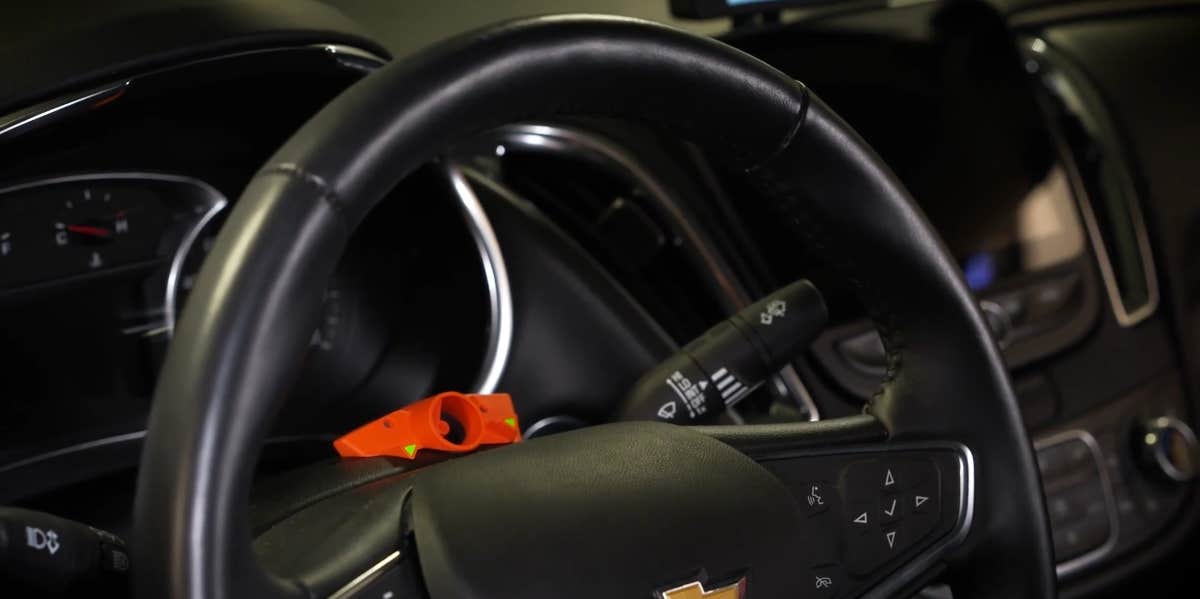Alcohol Detection Systems Will Now Be Mandatory In All New Cars To Prevent Drunk Driving
This could lower drunk-driving deaths significantly.
 KEA Technologies
KEA Technologies The National Highway Traffic Safety Administration did a study in 2019 that shows 28 people die every day in drunk driving crashes — that's one person every 52 minutes.
Although that’s actually the lowest percentage since 1982 when NHTSA started tracking data, it’s still a lot more than is necessary when these deaths could all be prevented.
Thankfully, new legislation seeks to minimize drunk driving and its effects by mandating systems that will detect blood alcohol levels in all new cars.
Are alcohol detection systems required in cars in the US?
The 2021 U.S. Infrastructure Bill included a law that requires alcohol detection systems in all new cars.
Biden’s new $1 trillion bipartisan infrastructure bill included a mandate that requires all car manufacturers to include alcohol detection systems in the making of all new vehicles after 2026.
Since the 1980s when drunk-driving laws became much stricter in terms of legal repercussions and fines, drunk-driving deaths have been largely reduced, although they are still a major problem in the U.S. today.
Between 2010 and 2019, there have been more than 10,000 deaths per year on average due to drunk-driving crashes, and drunk drivers contribute approximately one-third of all traffic crash fatalities — 36,096 people died on the road in 2019.
But there is hope.
Previously, several states in the United States required those guilty of driving under the influence (DUI) to install an ignition interlock device that would require them to perform a breathalyzer test before starting their car.
This new system is similar, but it now applies to everyone in the country versus just the people with a drunk-driving history — and the technology is much more advanced.
Tech company KEA Technologies in Marlboro, Massachusetts, is one of many companies working on the advanced impaired driving technology called the Driver Alcohol Detection System for Safety (DADSS.)
How does DADSS work?
The way the DADSS program works is it uses infrared sensors mounted on the dashboard and door that register a driver’s breath and touch sensors that capture blood alcohol levels in the skin — KEA Technologies says that the results come back in a second.
Bud Zaouk, President and CEO of KEA Technologies, promises that the program is non-invasive.
“You get in the vehicle the sensor will detect if you had alcohol and how much alcohol you had,” Zaouk said. “It will be something that tells you that you are above the legal limit in your state. You can start the vehicle but not allow you to move the car.”
The statement comes as a result of growing concerns over privacy and data that the program might be collecting.
“Obviously this is not the cop on board,” Zaouk said. “This is not something that is going to be monitoring you and recording what you are doing. It’s just there to really prevent you from making the wrong decision.”
According to a recent study by the Insurance Institute for Highway Safety, this new system could save upwards of 9,000 live per year, but it will take a while for those results to roll in.
DADSS will slowly be installed in all new cars.
The infrastructure bill calls on NHTSA to finalize the program they plan to include in the vehicles within three years, and then allows them another two years for automakers to begin producing those vehicles.
Depending on how long the process takes, the systems could be rolled out much earlier than the allotted 2026 time and could take effect by 2024 — but they could also be delayed.
The bill also gave officials the room to conclude that the timeline isn’t feasible, allowing them the ability to call for a delay — congressional deadlines being something the NHTSA has struggled to meet in the past.
However long it takes, it’s still a huge step in the right direction and the biggest action taken to combat drunk driving in decades.
Isaac Serna-Diez is a writer who focuses on entertainment and news, social justice, and politics. Follow him on Twitter here.

